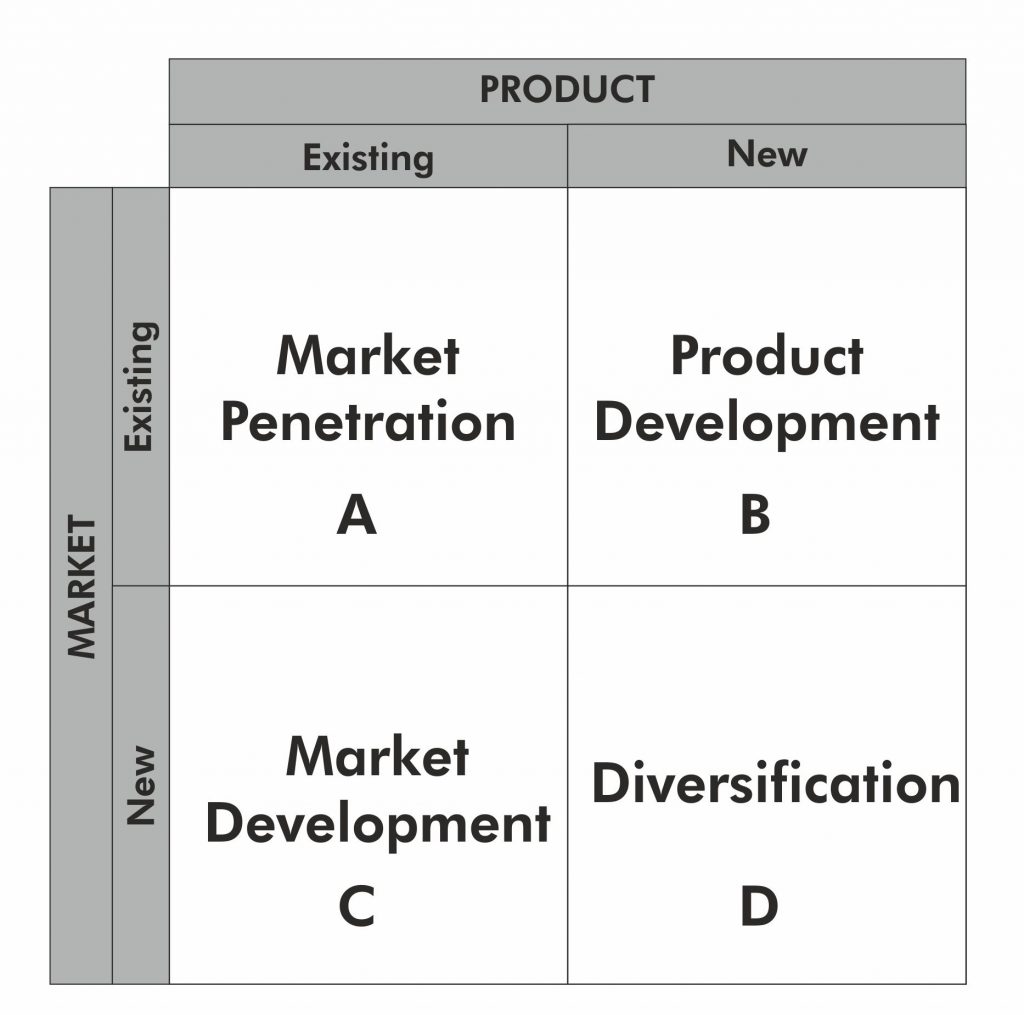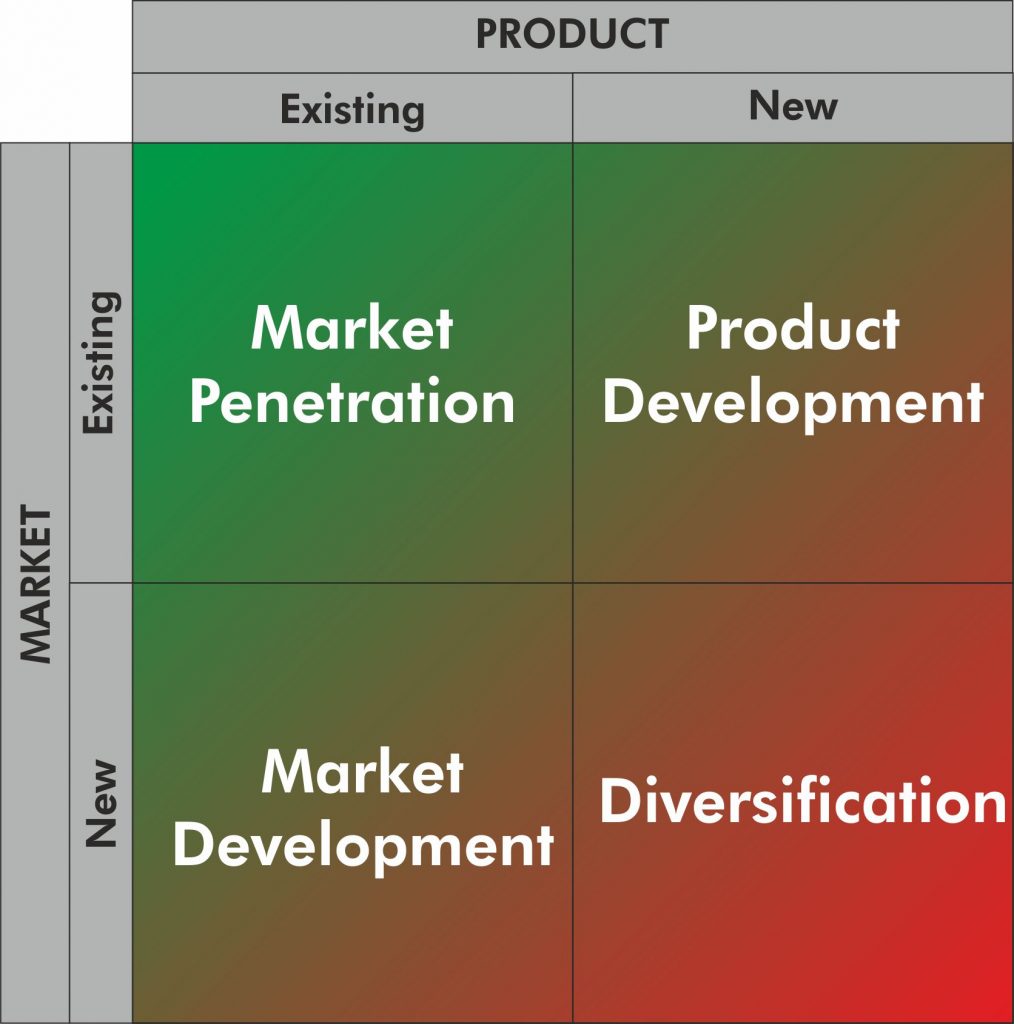Ansoff’s Matrix Made Me Aware: Why We Could Not Get New Products To Market &Why Graphic Warehouse Has Become So Successful
Why You Should Read This Article?
This might not be right for your business and I am happy to open a discussion but, if you are like me and willing to consider anything…try and get to the end and I hope this tool works for you.
I try to get my team to refer back to Ansoff’s Matrix every time we come up with a new idea or improvement to our business. You will benefit from understanding this marketing tool when running your printing business as you are likely considering ways of sustaining sales or growing your business.
I was made aware of this tool at a training seminar held by CEED (Centre of Engineering, Education and Development).
"Do not spend your time developing new products to sell in new markets."
Day one of the seminar ended on the above punchline – Ouch, that hurt, I had spent the last 10 years trying to iron out seasonality – Consultancy based selling we found slow to grow (signage and display projects took a long time to come off and they always came along 3 at a time).
We manufacture signs and display graphics with many disciplines under one roof.
- 3.2m wide roll to roll
- 3.5 x 2.5m Flatbed
- Digital Cutting
- Welding – 7m Track welding and hemming
- Laminating
- Sewing
- Mounting
- Lamainating
Our analysis had shown we have 126,000 combinations of “products” in our business: XYX variation of ABC Widget. So we have standardised over 250 products by process mapping products that are manufactured the same way continually, right down to print, cut, mount and packaging times. This does not solve the problem of bespoke jobs with better margin because service is the commodity.
So how did we come to this concluion?
What Is Ansoff's Matrix and Why Print Service Providers Should Learn From It

The Ansoff Matrix is a strategic planning tool that provides a framework to help devise strategies for future growth. It is named after Russian American Igor Ansoff, an applied mathematician and business manager, who created the concept. Wikipedia
Market Penetration - Existing Products to Existing Markets (Customers)

Selling Existing Product to Existing Customer (top left box) is what we tend to do. Sell existing products to our existing market to gain a bigger market share.
It is the fastest and safet way to grow our business.
If we grow we look for new customers to sell the existing product, this is called Market Penetration (Fig 1. A) and is the fastest, safest and lowest cost method of growing our businesses. a simple growth strategy… that everyone is doing but we are all competing on price when it’s a commodity, yes?
Product Development - New Products Sold to Existing Markets (Customers)
I think we, Print, Sign and Graphics suppliers, are the underdog of engineering. Every day throws us curve balls, problems we did not know how to do: so we bend, bash, stretch, fold and then make it, applying all our “Common Sense” thus “inventing” and Building New Products.
These New Products are then sold to our Existing Clients, Product Development (Top Right Box).
We have developed some cardboard engineered products and can take them to our existing customers and sell what they can’t get from our competitors. But it is new, we encounter problems in developing the weird and wonderful stuff we have never done before. Does this sound familiar?
Market Development - Existing Products to a New Market
But what about New Market sectors (Bottom Left Box)?
We had a roll to roll printer and a Rolls Roller, why not sell estate agent boards – Simple, Print, Mount, Cut and sell to Estate Agents? In 2007/8 the housing market was going great. We knew how to make the boards, let’s just go and get new customer in that sector.
Fail: Poor Market research eventually became evident with a franchise cornering this market.
Diversification - New Products to New Markets
We were the guys whe developed the web-to-print design your own printed manicure nail stickers – www.WooWooNails.com. This was not a complete failure, it ironed out seasonality and came off the back of customised photo canvas website called www.PhotoArtWarehouse.co.uk where we manufactured pieces of wallart 300K for 200K unique customers and never spoke to them. We sold them through Daily Deal sites like Groupon and use it in the winter months when we were low on business.
This was New Product taken to a New Market, consumers (Bottom Right Box). It was hard work for little margin but kept us fully employed and did not make losses in the winter.

Diversification is risky (Fig 2 – the Red Zone). You are spending all your time researching and developing the new product and then trying to create traction from Markets you do not know. You, will pour money down the drain and quite often fail because you just don’t know enough about the new market and how it works it the hardest area to develop your business.
Conclusion: Focus on Market Penetration: WRONG!
Day 2 - Oh oh... I've Got It All Wrong
I’m reared up and have been thinking of ways to get greater market share by using existing products in existing markets as this is the simplest growth strategy, Right?
Apparently not:
Those of us who do not continually innovate and allocate time in the red zone will never be able to move ahead of current trends, we offer our existing markets new products different from our competitors and strive to be different.
Graphic Warehouse Tweet
Our continual drive for efficiency through software development has NOW left us in a great position.
We have launched a trade platform (www.GraphicWarehouse.co.uk) with over 250 large format printed products where users can get a price with a customised template, upload artwork, preflight, edit and send directly to our print queues across 9 printers with dedicated stocks – this can happen in 60 seconds, yes 60 seconds, from anywhere in the world
The benefit to our customers is that they do not have to invest in the technology to be able to sell large format print to their existing customers: Take our existing products to their existing customers and they will grow safely with minimal risk.
We did not stumble upon this. Instead we made many costly mistakes by trying to take new products to new markets we did not understand but we became field leading software developers who were hands on manufacturers and applied process to each product that we have “commoditised”. We have moved all the learning and experience from Diversification into the green and now focusing on Market Penetration.
We’ve made all the R&D (Diversification) to which our customers can benefit and we are happy to share our experience, knowledge and expertise: we can all grow together.











































































































































Please login to post a comment.